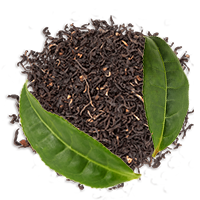Types of tea

All types of tea come from the Camellia sinensis plant, an evergreen shrub that may grow up to sixty feet in the wild. There are over 3000 varieties of tea, many teas are named after the area they are grown in. For example, Assam tea is named after the Assam region in India and Yunnan tea is named after the Chinese province. where the tea is grown, the climate, soil conditions and how the tea is processed will altogether determine its flavor characteristics. While there are literally thousands of teas in the world, as a subject of classification tea can be broken down into six main types: black, green, oolong, white, pu-erh and yellow.
Black Tea
Black tea is withered, fully oxidized and dried. Black tea commonly yields a hearty, amber-colored brew. Some of the most popular types of black teas are bold breakfast teas (e.g. English Breakfast, Irish Breakfast) and Darjeelings.
Green Tea
Green tea production endeavors to avoid the oxidation of the tea leaves, in order to retain its natural green color and fresh flavor. In Japan, the leaves are steamed, while other countries will pan-fire or dry it through other methods. This type of tea has a more delicate flavor than black tea and often brews up pale green or golden in color.
Oolong Tea
Oolong tea is produced mainly in China and Taiwan and is only partially oxidized. This type of tea can range from tasting similar to a fresh green tea, The flavor can vary widely, depending on where the tea leaves are grown and how the tea is made.
White Tea
Originally from China, white tea is simply withered and dried, causing a very light oxidation. Its flavor is most similar to that of green tea, but is usually more creamy, soft and sweet.
Pu-erh
Pu-erh (also spelled pu’er) comes exclusively from China and is famous for its distinctively earthy flavor. Pu-erh is tea that has been fermented, often stored underground for several years. Traditionally, pu-erh is compressed into round cakes and can be very expensive.
Yellow Tea
Yellow tea is the rarest type of tea. It is similarly processed to green tea, but is more slowly dried to make the leaves take on a yellow color. The taste of the tea is mild, often described as being somewhere between white and green tea.











